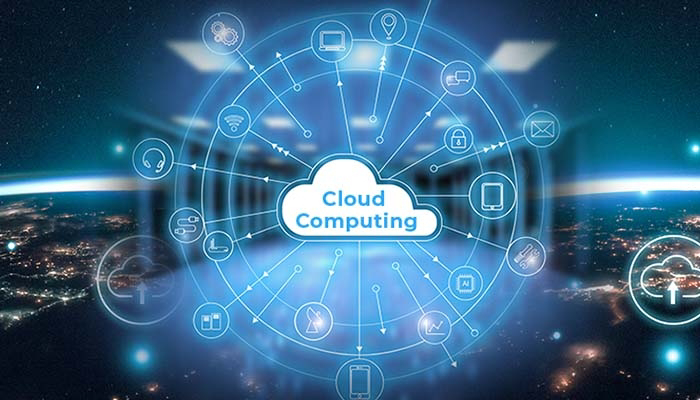Cloud computing has transformed the way businesses and individuals store, access, and manage data and applications. At its core, cloud computing refers to the delivery of computing services—including servers, storage, databases, networking, software, analytics, and intelligence—over the internet ("the cloud") to offer faster innovation, flexible resources, and economies of scale. Here's a comprehensive look at cloud computing, its components, benefits, challenges, and future prospects.
Components of Cloud Computing:
1. **Infrastructure as a Service (IaaS)**: Provides virtualized computing resources over the internet. Users can rent virtual machines, storage, and networking on a pay-as-you-go basis.
2. **Platform as a Service (PaaS)**: Offers a platform allowing customers to develop, run, and manage applications without the complexity of building and maintaining the underlying infrastructure.
3. **Software as a Service (SaaS)**: Delivers software applications over the internet, eliminating the need to install and run applications on individual computers.
Benefits of Cloud Computing:
1. **Scalability**: Cloud computing allows businesses to scale resources up or down quickly based on demand, enabling cost-efficiency and flexibility.
2. **Cost Savings**: By eliminating the need for upfront infrastructure investment and reducing maintenance costs, cloud computing offers significant cost savings.
3. **Flexibility and Accessibility**: Cloud services can be accessed from anywhere with an internet connection, providing flexibility for users to work remotely and access resources on various devices.
4. **Reliability and Redundancy**: Cloud providers typically offer robust data backup and disaster recovery solutions, ensuring high availability and reliability.
5. **Innovation**: Cloud computing enables rapid deployment of new applications and services, fostering innovation and faster time-to-market.
Challenges of Cloud Computing:
1. **Security Concerns**: Storing data and applications off-site raises security concerns, including data breaches, compliance issues, and loss of control over sensitive information.
2. **Data Privacy**: Compliance with data privacy regulations such as GDPR and CCPA can be challenging, especially when data is stored in multiple geographic locations.
3. **Vendor Lock-In**: Dependency on a single cloud provider may limit flexibility and make it difficult to switch providers or migrate to on-premises solutions.
4. **Performance and Latency**: Depending on internet connectivity and server location, performance and latency issues may arise, impacting user experience and application responsiveness.
5. **Cost Management**: While cloud computing offers cost savings, improper resource allocation and usage can lead to unexpected expenses, requiring effective cost management strategies.
Future of Cloud Computing:
1. **Edge Computing**: With the proliferation of IoT devices and the need for low-latency processing, edge computing—processing data closer to the source—is gaining momentum, complementing cloud computing.
2. **Hybrid and Multi-Cloud**: Many organizations are adopting hybrid and multi-cloud strategies to leverage the benefits of multiple cloud providers while maintaining control over critical data and applications.
3. **Serverless Computing**: Serverless computing abstracts infrastructure management, allowing developers to focus solely on writing code, further streamlining application development and deployment.
4. **Artificial Intelligence and Machine Learning**: Cloud providers are integrating AI and machine learning services into their offerings, enabling businesses to harness the power of data-driven insights and automation.
5. **Security and Compliance**: Continued advancements in cloud security and compliance solutions will be crucial to addressing evolving threats and regulatory requirements, enhancing trust in cloud services.
In conclusion, cloud computing has revolutionized the way businesses operate, offering unprecedented scalability, flexibility, and innovation opportunities. While challenges such as security and cost management persist, ongoing advancements and evolving strategies promise to further optimize cloud computing for the future.







🖥️very informative
ReplyDelete